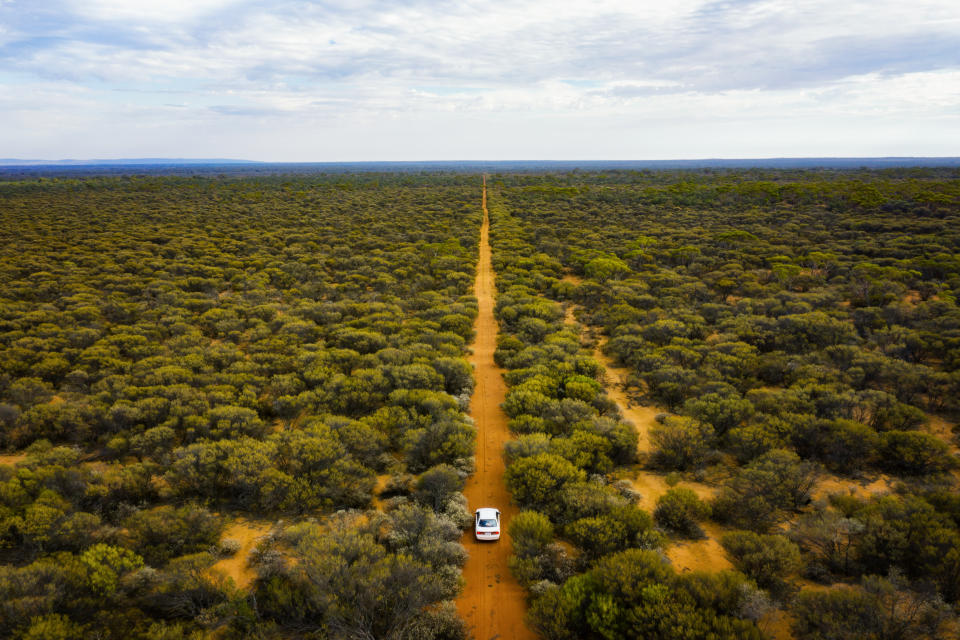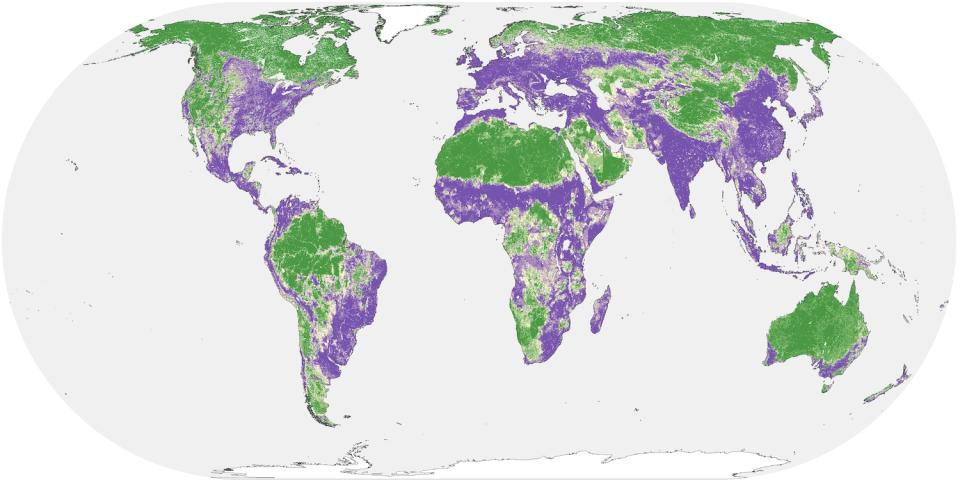Half of land on Earth is still 'untouched by humans' and could be saved

Half of the ice-free land on Earth is still mostly untouched by human beings, a study has shown.
Researchers said this represents an opportunity to conserve half our planet’s land intact.
Lead author Jason Riggio, of UC Davis, said: “The encouraging takeaway from this study is that if we act quickly and decisively, there is a slim window in which we can still conserve roughly half of Earth’s land in a relatively intact state.”
The study analysed four recent global maps of the conversion to human land use, such as cities, croplands, and places intensively ranched or mined.
Read more: Coronavirus shows us how the planet’s health is linked to our own
Co-author Professor Erle Ellis, of the University of Maryland-Baltimore County, said: “Though human land uses are increasingly threatening Earth’s remaining natural habitats, especially in warmer and more hospitable areas, nearly half of Earth still remains in areas without large-scale intensive use.”
Among the largest low-impact areas are broad stretches of boreal forests and tundra across northern Asia and North America and vast deserts like the Sahara in Africa and the Australian Outback.
These areas tend to be colder and/or drier and less fit for agriculture.

At present, 15 percent of Earth’s land surface and 10 percent of oceans are protected in some form.
But organisations such as Nature Needs Half have been campaigning for governments to commit to protecting 30 percent of the land and water by 2030 and 50 percent by 2050.
Intact natural lands across the globe can help purify air and water, recycle nutrients, enhance soil fertility and retention, pollinate plants, and break down waste products.
Read more: Nature crisis - new global extinction target agreed
Some scientists have claimed that these ‘ecosystem services’ are worth trillions of pounds each year to the global economy.
The coronavirus pandemic now shaking the globe illustrates the importance of maintaining natural lands to separate animal and human activity, the researchers said.
The leading scientific evidence points to the likelihood that SARS-CoV2, the virus that causes the disease COVID-19, is a zoonotic virus that jumped from animals to humans. Ebola, bird flu and SARS are other diseases known to have spilled over into the human population from nonhuman animals.
“Human risk to diseases like COVID-19 could be reduced by halting the trade and sale of wildlife, and minimising human intrusion into wild areas,” said senior author Andrew Jacobson, professor of GIS (geographic information system) and conservation at Catawba College in North Carolina.
Jacobson said that regional and national land-use planning that identify and appropriately zone locations best suited to urban growth and agriculture could help control the spread of human development.

 Yahoo Sports
Yahoo Sports 
